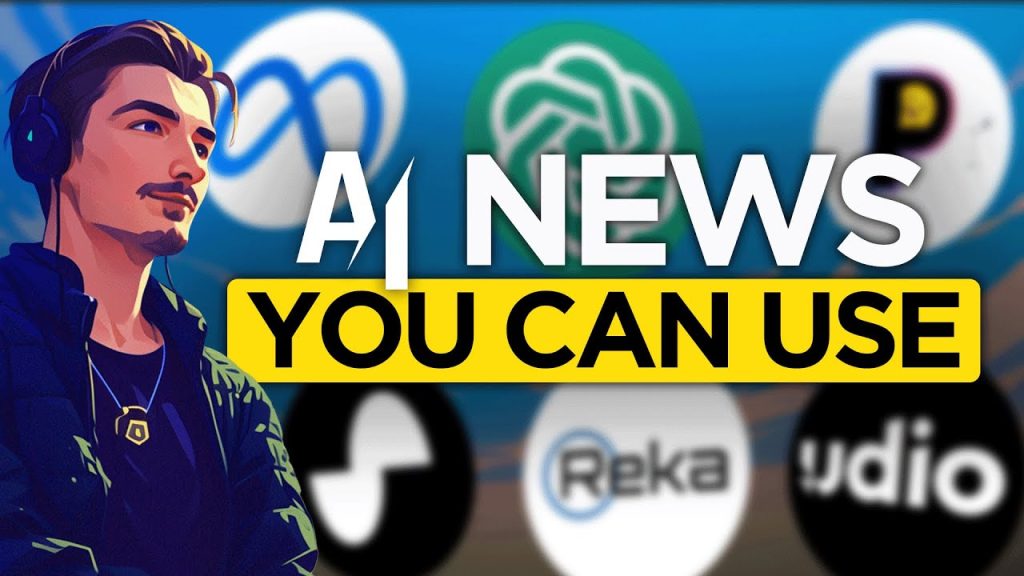AI Innovations Taking the World by Storm

Imagine a world where your device talks like a human, generates creative content, and even composes music. This week, we peel back the layers on the latest advancements in artificial intelligence that are making headlines. From revolutionary text-to-speech models to cutting-edge language algorithms, there’s plenty to be amazed by.
These new technologies aren’t just for tech enthusiasts. They’re breaking boundaries and entering mainstream applications, making them more accessible and useful for everyone. Let’s dive into the key developments that are set to redefine our interaction with technology.
Revolutionizing Text-to-Speech
There’s a new text-to-speech model that is causing a stir. Unlike many others, this model is open-sourced on GitHub, eliminating paywalls and subscription fees. Users can easily access it through Hugging Face and generate voice outputs by simply inputting text. This model was trained on 10,000 hours of narrated audiobooks, resulting in a pleasant and natural-sounding voice. While it struggles with specific words like ‘YouTube,’ it is an impressive first iteration, and improvements are expected in future versions.
Meta’s LLaMA Model: A Game Changer
On April 18th, Meta introduced LLaMA, its new open-source language model that is shaking up the AI landscape. The model comes in two versions: an 8 billion parameter model and a 70 billion parameter model. LLaMA stands out because it is fully open-source and integrates into Meta’s ecosystem, including WhatsApp, Facebook Messenger, and Instagram.
The 70 billion parameter version is especially notable. It outperforms other medium-sized models like GPT-3.5 and Claude. Even though a 400 billion parameter model is still in training and expected later this year, LLaMA has already proven its capabilities. Meta plans to roll out this model across its products, making advanced AI accessible to billions.
OpenAI’s API Gets an Upgrade
OpenAI made a significant upgrade to its Assistant API, making it much more practical for developers. One major change is the ability to attach up to 10,000 files, enhancing the AI’s contextual awareness—a critical feature for business applications.
Additionally, users will appreciate the new feature that allows project organization by API costs. These improvements are making the Assistant API more efficient and useful, albeit with a high price tag.
Grammarly’s New AI Features
Grammarly has introduced new AI features that elevate its functionality. Known for correcting spelling and grammatical errors, Grammarly now includes a language model capable of providing context-aware writing suggestions. Users can set their voice tone and get personalized adjustments, making it easier to write effectively.
For instance, when composing a social media post, users can click a button to rewrite the text according to their predefined settings. This not only helps in improving the text but also aligns it with the user’s chosen style, making it a handy tool for content creators and social media managers.
Creative Uses of AI: Stand-Up Comedy
A new AI tool called Audo is making waves, not just in music creation but also in generating stand-up comedy routines. Using language models, users can prompt the AI to write a stand-up set, which can then be turned into a performance. It’s a fun, free, and innovative way to leverage AI for entertainment.
This tool is user-friendly; one can input a prompt, like a joke or funny scenario, and receive a fully formed comedy routine. While the quality may vary depending on the input, the concept is exciting and opens new avenues for creative expression.
Sunno’s Musical Genre Exploration Tool
Sunno’s competitor has released a tool that allows users to explore various musical genres. This AI-driven platform can combine different musical styles into unique compositions. Though some combinations may seem odd, the tool offers an exciting way for users to discover new musical tastes.
The interface is user-friendly and offers a wide range of musical styles to experiment with. Whether you are into reggae, jazz, or avant-garde, this tool has something for everyone. It’s a fun way to explore music, especially for those looking for inspiration or new genres to enjoy.
Open-Source AI Models: RAI and Wizard LM
RAI has introduced a new multimodal language model that challenges Opus, particularly in human evaluation benchmarks. This model is available through an API, making it accessible for various applications.
Wizard LM has also released a groundbreaking open-source LLM that claims to outperform even GPT-4. Although the model was temporarily taken down due to a missing toxicity test, it was re-uploaded and is now available for public use. These models represent significant advancements in the open-source AI community.
Hugging Face’s Image to 3D Tool
Hugging Face has unveiled a new tool for converting 2D images into 3D models. While not flawless, the tool shows significant promise and often produces better results than existing alternatives.
For example, users can upload a simple image, like a person or an object, and receive a somewhat accurate 3D model in return. Though some aspects like faces and intricate details may need more refinement, the tool is a step forward in image-to-3D technology.
Artificial intelligence is continuously pushing the boundaries of what’s possible. From open-source text-to-speech models to Meta’s ground-breaking LLaMA model, the advancements are reshaping the tech landscape. OpenAI’s API improvements, Grammarly’s new features, and creative uses of AI like stand-up comedy illustrate AI’s growing utility and versatility. As technology evolves, so do the ways we can leverage it, making life more convenient and entertaining. These innovations are just the beginning of an exciting journey towards smarter and more capable AI-powered tools.





